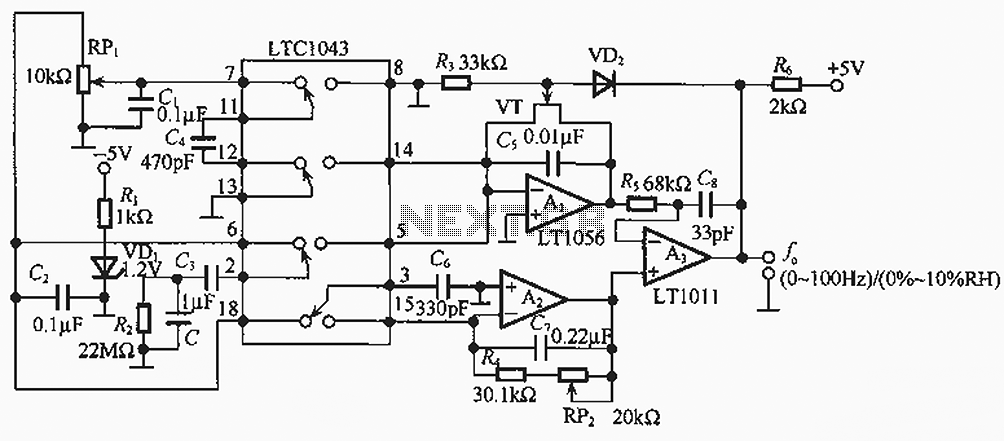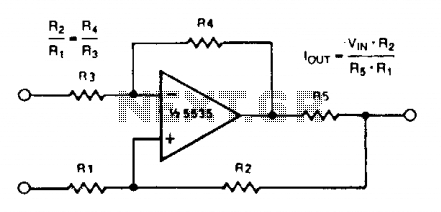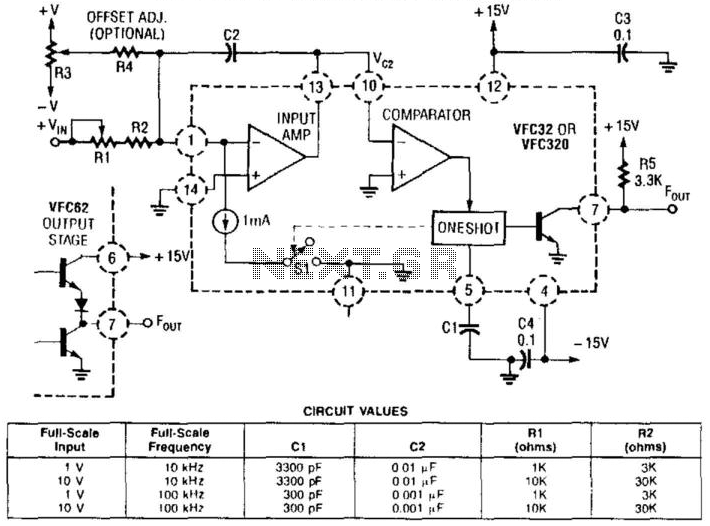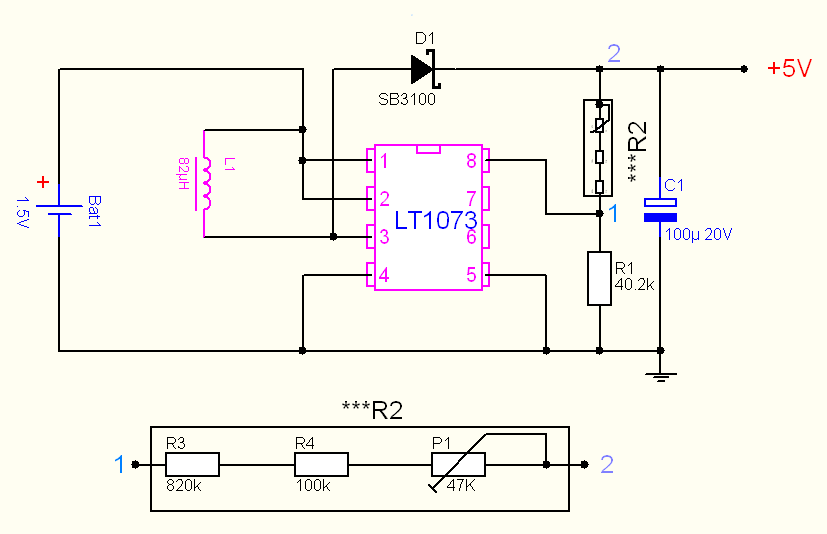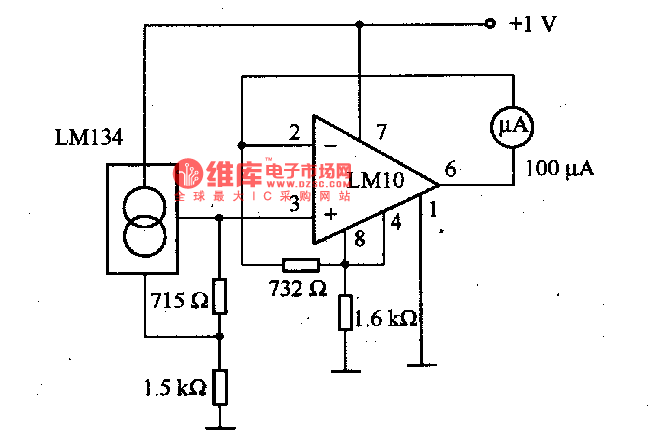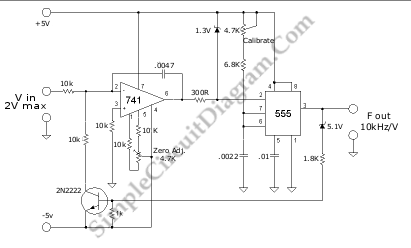
LF356 composed of AD converter
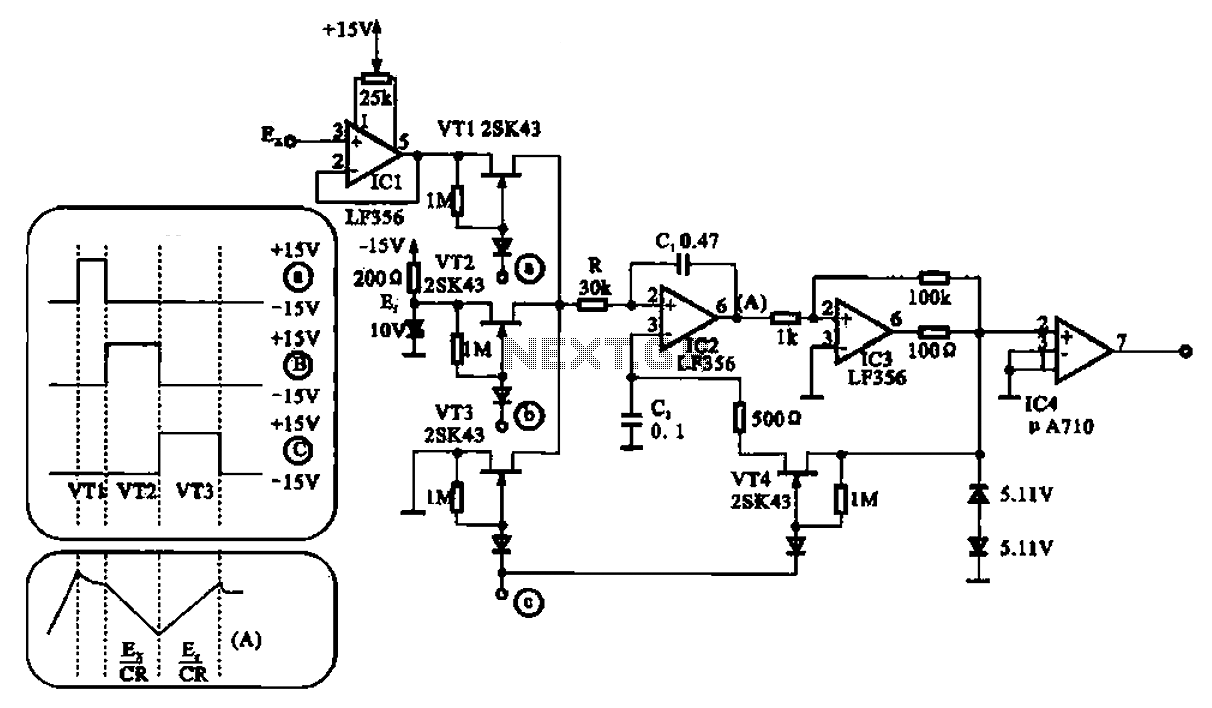
An A/D converter transforms an analog signal into a digital format. Various circuit configurations exist, as illustrated in Figures 21-24, which depict the structure of an A/D converter. One practical circuit configuration utilizes the integrated circuit LF356.
The A/D converter is an essential component in modern electronics, enabling the interface between analog signals, such as those from sensors, and digital systems, such as microcontrollers and digital signal processors. The LF356, a quad operational amplifier, is often employed in A/D converter designs due to its high-speed performance and low noise characteristics, making it suitable for applications requiring precise signal conversion.
In a typical A/D converter circuit utilizing the LF356, the analog input signal is first conditioned through amplification and filtering stages to ensure that it falls within the acceptable input range of the converter. The LF356 can be configured as a non-inverting amplifier to boost the signal amplitude while maintaining its integrity.
The output from the LF356 is then fed into a sample-and-hold circuit, which captures the analog signal at a specific moment in time, allowing for accurate conversion. This is crucial in applications where the input signal may vary rapidly. Following the sample-and-hold stage, the signal is directed to the A/D conversion stage, which employs techniques such as successive approximation, flash conversion, or delta-sigma modulation, depending on the design requirements.
The choice of A/D conversion technique affects the speed, resolution, and overall performance of the circuit. For instance, a successive approximation A/D converter might be chosen for its balance between speed and resolution, while a flash converter might be preferred for applications requiring extremely fast conversion times.
The output of the A/D converter is a digital representation of the analog input signal, which can then be processed by digital circuits. Proper layout and design considerations are critical to minimize noise and ensure signal integrity throughout the conversion process. Additionally, decoupling capacitors and careful grounding techniques should be implemented to enhance performance and reliability of the A/D converter circuit.A/D converter is the analog signal into a digital circuit, it has a variety of circuits, as shown in Figures 21-24 is a circuit A/D converter structure, which is the use of a p ractical circuit configuration of the integrated circuit LF356 .
The A/D converter is an essential component in modern electronics, enabling the interface between analog signals, such as those from sensors, and digital systems, such as microcontrollers and digital signal processors. The LF356, a quad operational amplifier, is often employed in A/D converter designs due to its high-speed performance and low noise characteristics, making it suitable for applications requiring precise signal conversion.
In a typical A/D converter circuit utilizing the LF356, the analog input signal is first conditioned through amplification and filtering stages to ensure that it falls within the acceptable input range of the converter. The LF356 can be configured as a non-inverting amplifier to boost the signal amplitude while maintaining its integrity.
The output from the LF356 is then fed into a sample-and-hold circuit, which captures the analog signal at a specific moment in time, allowing for accurate conversion. This is crucial in applications where the input signal may vary rapidly. Following the sample-and-hold stage, the signal is directed to the A/D conversion stage, which employs techniques such as successive approximation, flash conversion, or delta-sigma modulation, depending on the design requirements.
The choice of A/D conversion technique affects the speed, resolution, and overall performance of the circuit. For instance, a successive approximation A/D converter might be chosen for its balance between speed and resolution, while a flash converter might be preferred for applications requiring extremely fast conversion times.
The output of the A/D converter is a digital representation of the analog input signal, which can then be processed by digital circuits. Proper layout and design considerations are critical to minimize noise and ensure signal integrity throughout the conversion process. Additionally, decoupling capacitors and careful grounding techniques should be implemented to enhance performance and reliability of the A/D converter circuit.A/D converter is the analog signal into a digital circuit, it has a variety of circuits, as shown in Figures 21-24 is a circuit A/D converter structure, which is the use of a p ractical circuit configuration of the integrated circuit LF356 .
